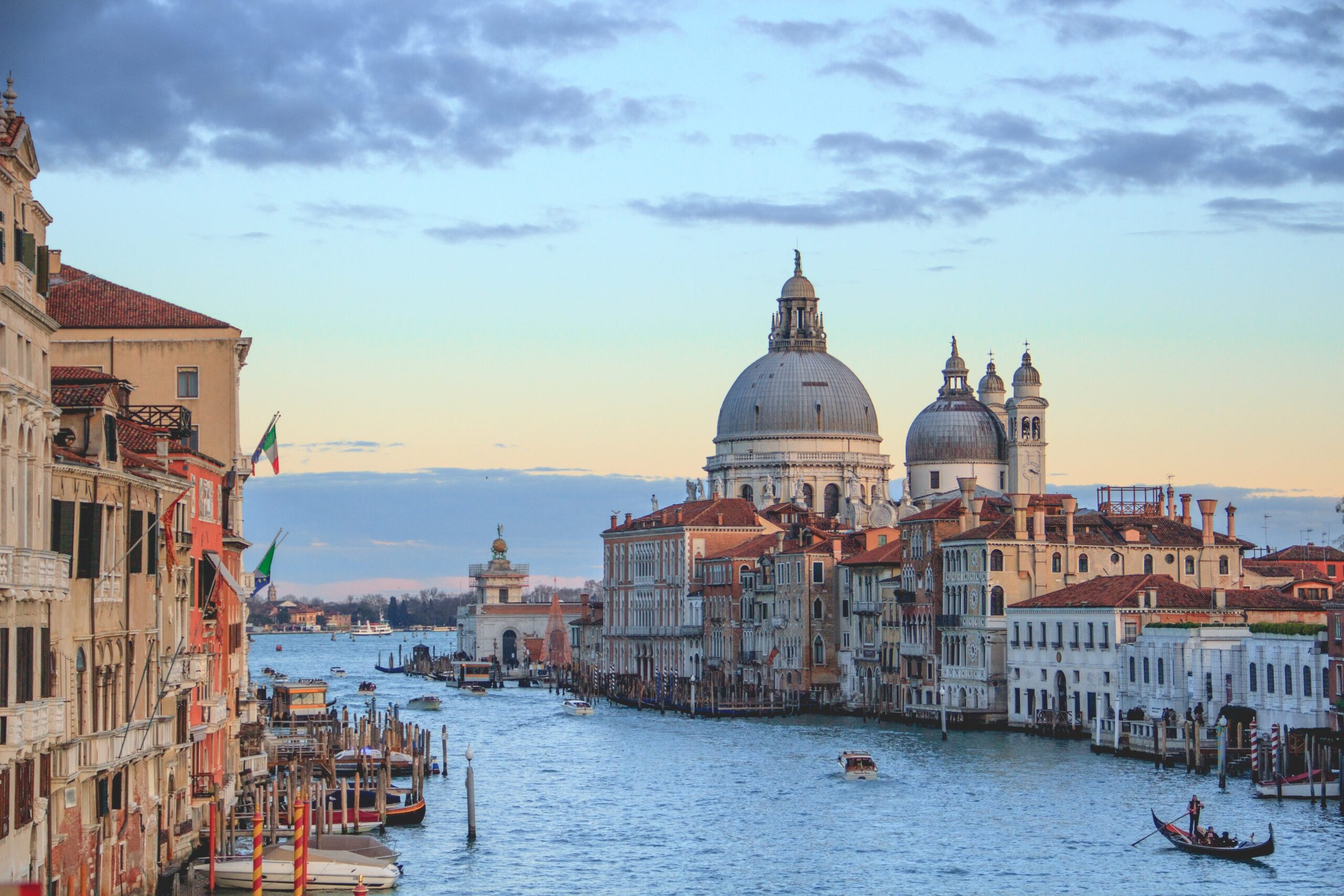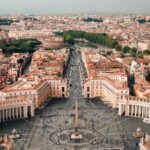Venice, located in a lagoon in the Adriatic Sea, in northern Italy’s Veneto region, is built on 117 small islands, separated by canals and connected by bridges. Venice is one of the most important tourist destinations in the world for its celebrated art and architecture, and together with the lagoon, is a UNESCO World Heritage site. The Grand Canal, the major water-traffic corridor in the city, is lined with Renaissance and Gothic palaces. On the central Piazza San Marco, main attractions include St. Mark’s Basilica, tiled with Byzantine mosaics, the Campanile bell tower, offering views of the city’s red roofs, and the Doge’s Palace, the former residence of the Doge, the supreme authority of the former Republic of Venice. A gondola ride is a quintessential Venetian experience, just as wandering its maze of calli and campielli.
Planning your trip to Venice – what you need to know
Best times to visit Venice
The most pleasant months to visit Venice are April, May, June, September, and October. However, these are generally also the busiest. Keep in mind that Venice gets approximately 20 million tourists a year; many are day trippers, disembarking from cruise ships. Venice is at its most quiet in the winter months, except during the holidays (especially the days around New Year’s Eve) and Carnival, which is usually in February. Winter however is when the city is cold and humid, and there may be occasional acqua alta, or flooding (but don’t worry, you can easily find rain boots at tobacco shops) and elevated walkways are set up on the busiest squares. In the off-season, prices are lower and lines shorter; sights may close earlier. Temperatures in summer are hot, but not as scorching as in inland cities.
Traveling to Venice – how to get there
Venice airport (VCE), called Marco Polo to honor the memory of the Venetian explorer, is located on the mainland approximately six kilometers north of Venice and served by more than 40 airlines. It offers direct flights to and from the East Coast of the United States.
The airport is connected to the nearby railway station of Venice Mestre on the mainland, which provides connection to the rest of Italy; to the bus terminal of Piazzale Roma at the entrance to Venice by scheduled bus services; to several destinations in Venice itself by the Alilaguna water shuttle; and to Piazza San Marco by the express Gold Line or water taxi.
Another airport located in the Venice area, Treviso Airport, sometimes labeled as Venice – Treviso mostly serves low-cost airlines, such as RyanAir.
Venice’s train station is Santa Lucia and is served by hundreds of trains every day, including Frecciarossa and Italo high-speed trains. The station sits across the lagoon, right on the Grand Canal, in Venice’s Cannaregio district. The Ponte dei Scalzi bridge, close to the station’s entrance, crosses the Grand Canal to the Santa Croce district; it’s 20 to 30 minutes to reach Saint Mark’s Square. The Ponte della Costituzione connects the station with the Piazzale Roma parking lot and cruise terminal. There is also a vaporetto (water bus) stop right in front of the station.






